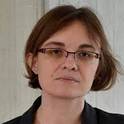
From the 9th-century conversion to Christianity until the 11th century, the ecclesiastical art and architecture of the Serbs, both Orthodox and Roman Catholic, shared the concurrent accomplishments of the Croats, Latins, and Greeks. All of these groups cohabited the territories between the rivers Bojana and Cetina in Duklja (Zeta, Montenegro), Zahumlje (Herzegovina), and their littoral. Wall *paintings, donor *portraits, inscriptions in Greek and Latin, and architectural *sculpture on *windows, portals, capitals, *chancel screens, *ciboria, and baptismal fonts, reveal influences of pre-Romanesque, Romanesque, and Byzantine models. Instructive examples come from the 9th-century *rotunda of St. Triphon at Kotor (809?), replaced by a Romanesque *cathedral in the mid 12th century; the 11th-century single-aisled church of St. Michael in Ston; and the 11th-century *basilica of Archangel Michael in the fortified town Martinići, near Skadar Lake.
Available at: http://works.bepress.com/jelena_bogdanovic/12/
